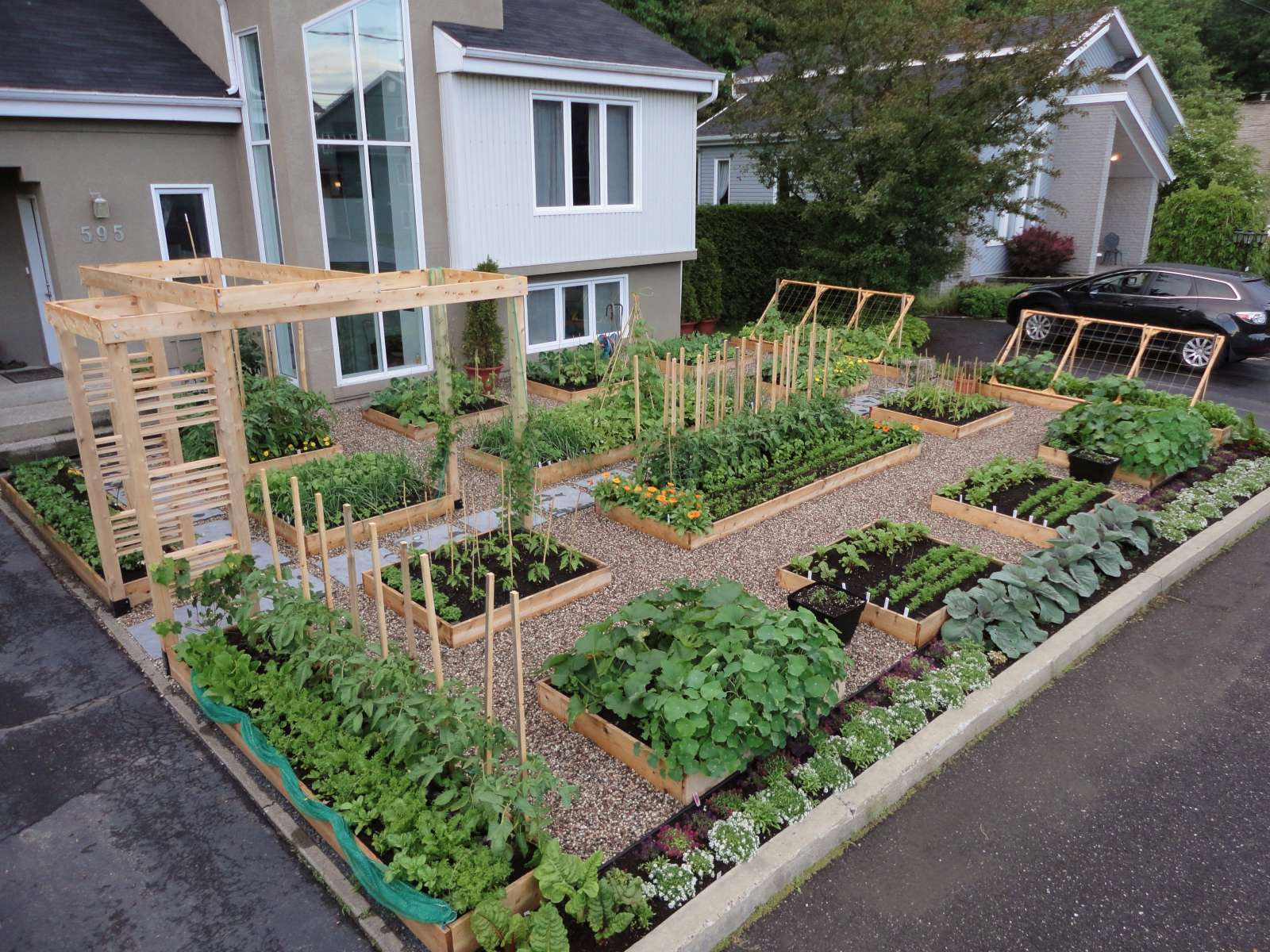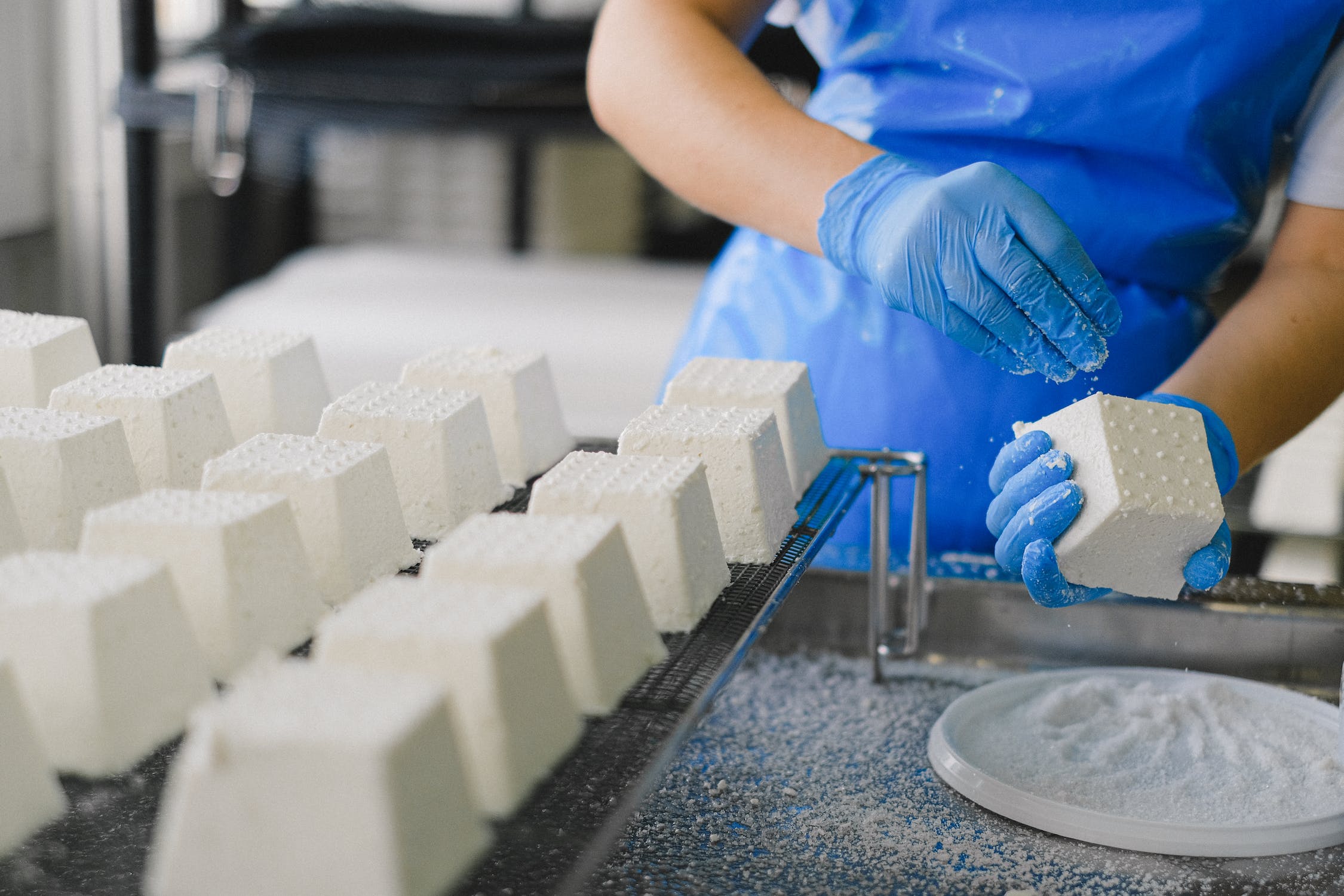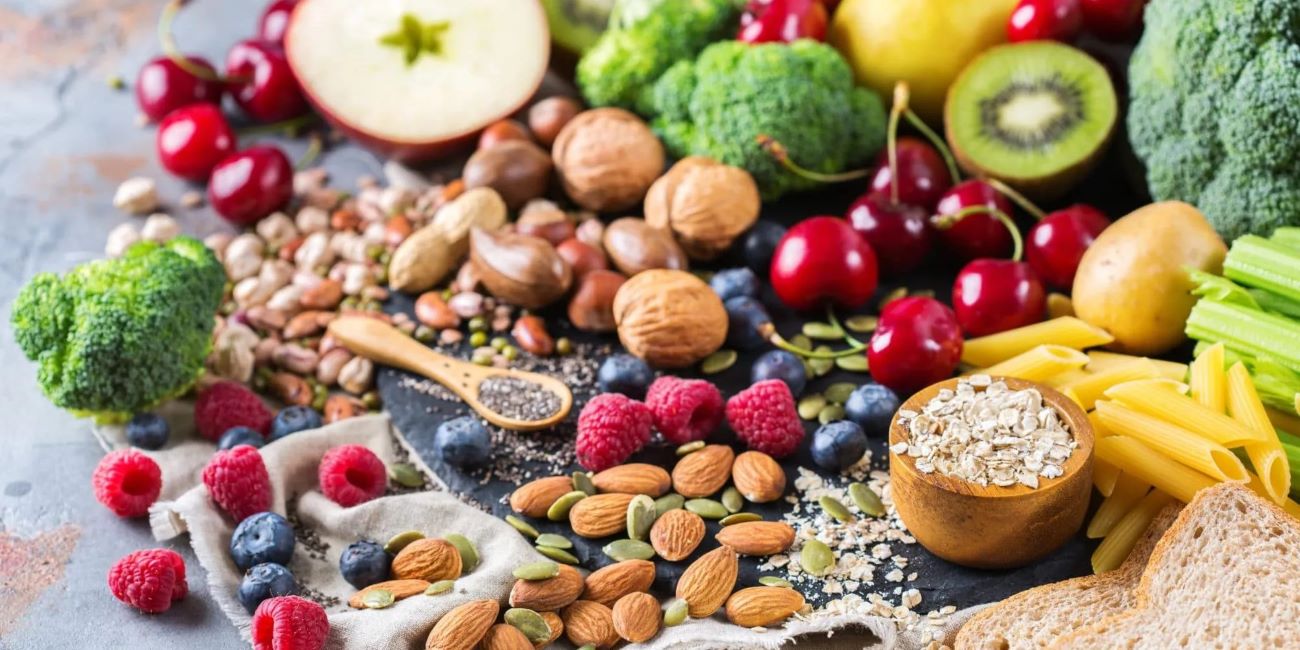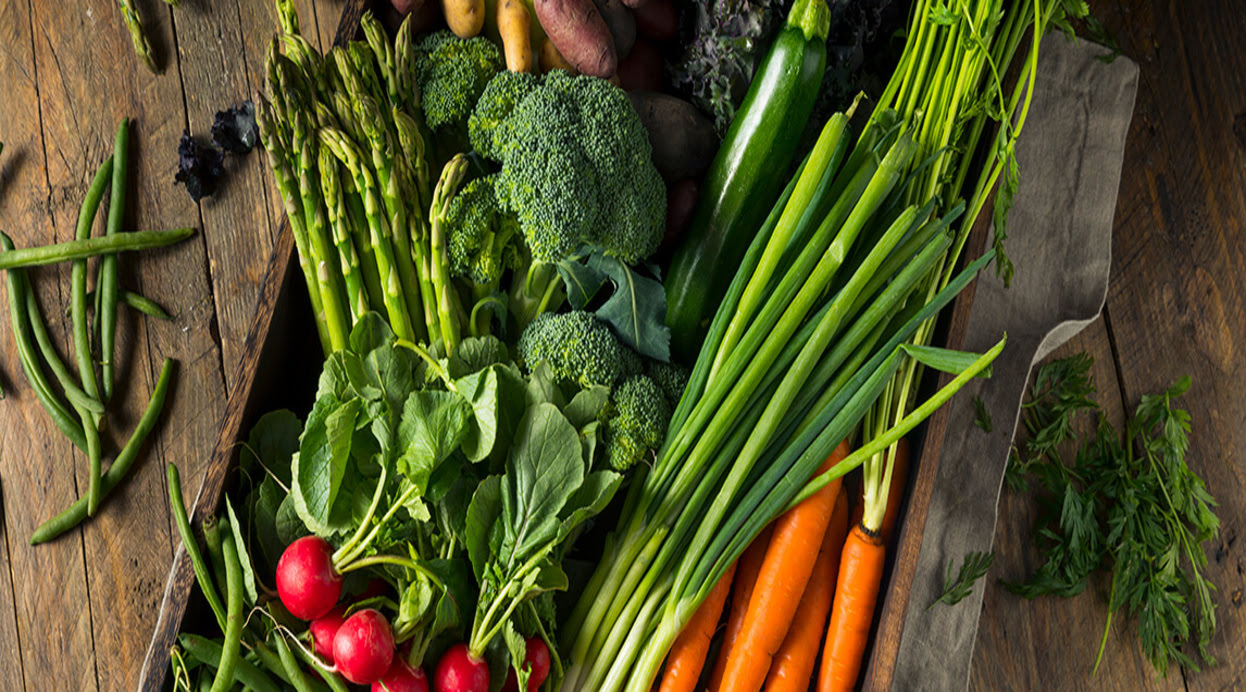Home>Gardening News and Trends>Latest News>How Can Food Handlers Reduce Bacteria To Safe Levels When Preparing Vegetables For Holding
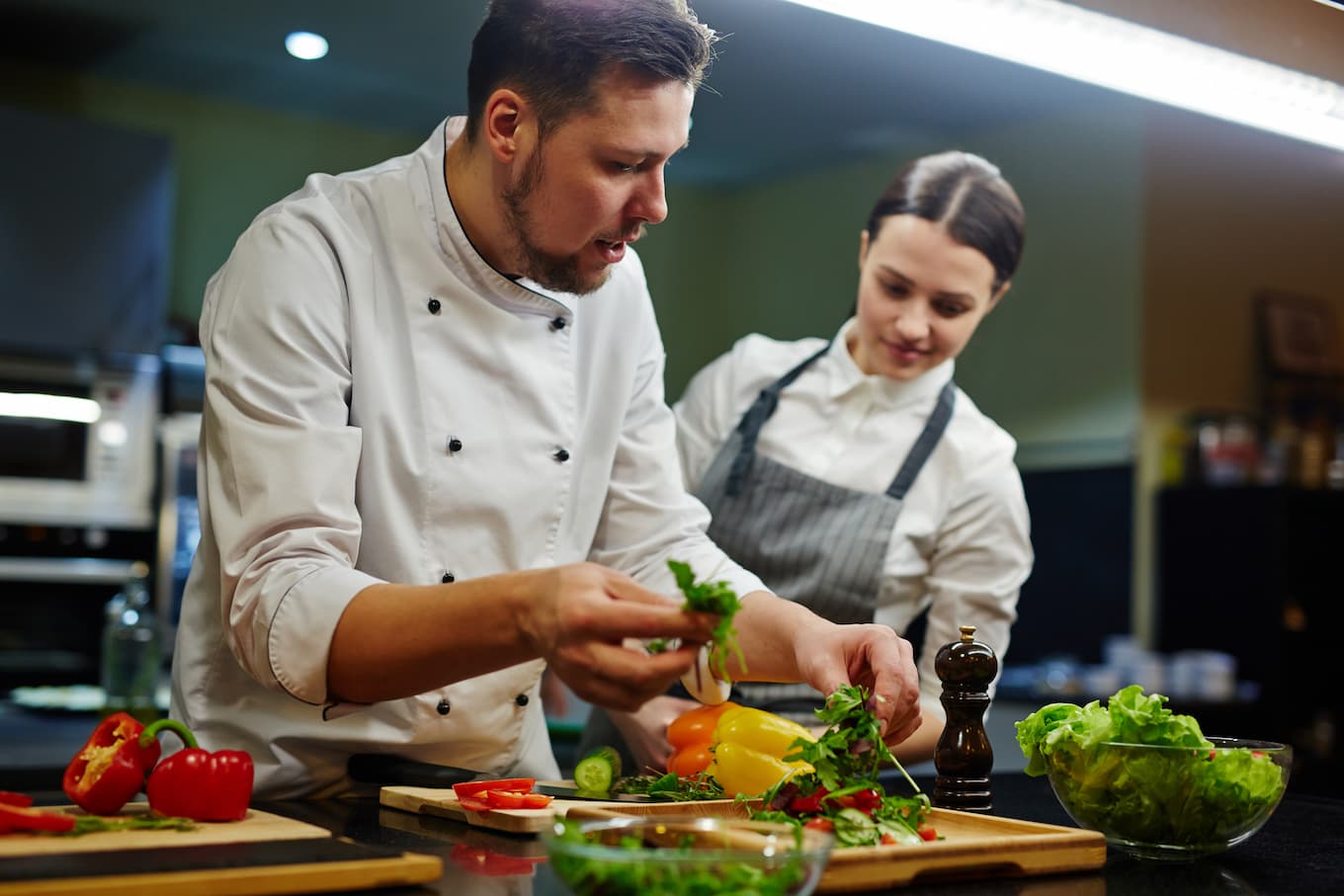

Latest News
How Can Food Handlers Reduce Bacteria To Safe Levels When Preparing Vegetables For Holding
Modified: January 22, 2024
Learn the latest news on how food handlers can effectively reduce bacteria to safe levels when preparing vegetables for holding.
(Many of the links in this article redirect to a specific reviewed product. Your purchase of these products through affiliate links helps to generate commission for Chicagolandgardening.com, at no extra cost. Learn more)
Table of Contents
- Introduction
- Importance of Reducing Bacteria Levels in Vegetables
- Proper Handwashing Techniques for Food Handlers
- Use of Gloves and Proper Glove Changing Procedures
- Sanitizing Cutting Boards and Utensils
- Washing and Rinsing Vegetables Effectively
- Proper Storage and Holding of Prepared Vegetables
- Monitoring and Maintaining Safe Bacteria Levels
- Conclusion
Introduction
Food safety is of paramount importance in the culinary world, particularly when it comes to handling and preparing vegetables for consumption. Vegetables, while rich in essential nutrients, can also harbor harmful bacteria that can lead to foodborne illnesses if not properly handled. As a result, it is crucial for food handlers to take measures to reduce bacteria levels and ensure the safety of the vegetables they prepare.
Bacteria can be naturally present on the surface of vegetables, originating from soil, water, and other sources. These bacteria can include harmful pathogens such as Salmonella, E. coli, and Listeria, which can cause severe illness in humans. Therefore, it is essential for food handlers to employ proper hygiene practices and effective techniques to minimize the risk of contamination and maintain safe bacteria levels in vegetables.
This article will explore various strategies that food handlers can employ to reduce bacteria to safe levels when preparing vegetables for holding. We will delve into topics such as proper handwashing techniques, the importance of using gloves, sanitizing cutting boards and utensils, effective vegetable washing techniques, proper storage and holding procedures, as well as the need for regular monitoring and maintenance to ensure food safety.
By following these guidelines, food handlers can significantly reduce the risk of foodborne illnesses and ensure that the vegetables they prepare are safe for consumption. So, let’s dive into further detail on how food handlers can effectively reduce bacteria levels and maintain food safety when handling and preparing vegetables.
Importance of Reducing Bacteria Levels in Vegetables
Reducing bacteria levels in vegetables is crucial for several reasons. First and foremost, it helps to prevent foodborne illnesses. Bacteria such as Salmonella, E. coli, and Listeria can contaminate vegetables and, when consumed, cause severe gastrointestinal symptoms, including nausea, vomiting, diarrhea, and abdominal pain. In some cases, these illnesses can be life-threatening, particularly for individuals with weakened immune systems, pregnant women, and young children. By reducing bacteria levels, food handlers can minimize the risk of these illnesses and protect the health and well-being of consumers.
Additionally, reducing bacteria levels in vegetables is essential for food establishments to maintain their reputation and comply with health and safety regulations. A single outbreak of foodborne illness can tarnish the reputation of a restaurant or food service establishment, leading to a loss of customers and potential legal consequences. By prioritizing food safety and consistently implementing measures to reduce bacteria levels, food handlers can demonstrate their commitment to providing safe and high-quality food to their patrons.
Another important reason to reduce bacteria levels in vegetables is to ensure their optimal shelf life. Bacteria can contribute to the decay and spoilage of vegetables, resulting in a shorter shelf life and financial losses for food establishments. By reducing bacteria levels, food handlers can extend the freshness and quality of vegetables, reducing the amount of waste and improving cost-effectiveness.
Lastly, reducing bacteria levels in vegetables is an essential component of good kitchen hygiene and professionalism. It reflects a commitment to maintaining a clean and safe working environment, which is vital for the overall success of a food establishment. By promoting hygiene practices and establishing robust procedures for reducing bacteria levels, food handlers can create a culture of safety and professionalism in their workplace.
Overall, reducing bacteria levels in vegetables is critical for preventing foodborne illness, maintaining a positive reputation, optimizing shelf life, and creating a safe and professional working environment. In the following sections, we will explore specific techniques and strategies that food handlers can implement to achieve these goals.
Proper Handwashing Techniques for Food Handlers
One of the fundamental steps in reducing bacteria levels when handling vegetables is proper handwashing. Effective hand hygiene is crucial as hands can easily become contaminated with bacteria during food preparation. Food handlers must follow the following steps to ensure thorough handwashing:
- Start by wetting hands with clean, running water, preferably warm, to ensure the removal of dirt and debris.
- Apply an adequate amount of soap and lather hands, ensuring to cover all surfaces. Pay particular attention to the back of the hands, fingertips, and areas between fingers.
- Scrub hands vigorously for at least 20 seconds. This timeframe is essential as it allows enough time to remove bacteria effectively. It may be helpful to hum the “Happy Birthday” song twice to track the time.
- Rinse hands thoroughly under running water to remove all soap residue and bacteria.
- Dry hands using a clean towel or air dryer. If using a towel, ensure it is single-use or dedicated to hand drying only.
- If possible, use a paper towel to turn off the faucet to avoid recontamination of clean hands.
It is important to note that handwashing should be performed at critical times during food preparation. These include before starting work, after using the restroom, after handling raw meat or poultry, after touching garbage or cleaning chemicals, and after sneezing or coughing. Consistently practicing proper handwashing techniques will significantly reduce the risk of transferring bacteria to vegetables and ensure their safety.
In addition to regular handwashing, food handlers should also be aware of the importance of avoiding hand contamination. This includes refraining from touching the face, hair, or other parts of the body during food preparation. Wearing clean uniforms and tying back long hair can also minimize the risk of introducing bacteria to the vegetables.
By following these proper handwashing techniques and maintaining good personal hygiene practices, food handlers can significantly reduce the bacterial load on their hands and prevent cross-contamination when handling vegetables. The next section will discuss the use of gloves and proper glove changing procedures, which is another important aspect of maintaining food safety.
Use of Gloves and Proper Glove Changing Procedures
In addition to proper handwashing, the use of gloves is an important measure to reduce bacterial contamination when handling vegetables. Gloves act as a barrier between food handlers’ hands and the vegetables they are preparing, minimizing the risk of cross-contamination. Here are some key guidelines for the use of gloves and proper glove changing procedures:
- Only use gloves that are specifically designed for food handling. These gloves should be made of materials such as latex, nitrile, or vinyl.
- Before putting on gloves, it is crucial to thoroughly wash hands following the proper handwashing techniques outlined earlier.
- Inspect gloves for any signs of damage or tears. Discard any gloves that are torn or compromised.
- When handling raw vegetables, always wear new gloves to prevent the transfer of bacteria from raw to ready-to-eat vegetables.
- Change gloves regularly, especially when switching between different tasks or after handling potentially contaminated surfaces or objects.
- Gloves should never be washed or reused. Once removed, they should be properly disposed of in designated waste containers.
- After removing gloves, it is crucial to wash hands thoroughly using the proper handwashing techniques.
It is important to note that gloves alone are not sufficient to prevent bacterial contamination. Proper handwashing is still necessary before putting on gloves and after removing them. Gloves should be seen as an additional layer of protection to minimize the risk of contamination, rather than a substitute for proper hand hygiene.
Food handlers should also be mindful of proper glove changing procedures. When switching between different tasks or handling different types of vegetables, gloves should be changed to prevent cross-contamination. For example, if a food handler is preparing raw vegetables and then needs to handle ready-to-eat vegetables, they should discard the gloves used for handling the raw vegetables and put on a fresh pair of gloves before proceeding.
By adhering to proper glove usage and changing procedures, food handlers can significantly reduce the risk of bacterial contamination and ensure the safety of the vegetables they handle. The next section will discuss sanitizing cutting boards and utensils, an essential step in maintaining food safety when preparing vegetables.
Sanitizing Cutting Boards and Utensils
Proper sanitation of cutting boards and utensils is crucial in preventing bacterial contamination when preparing vegetables. Cutting boards, especially those used for cutting raw vegetables or meat, can harbor harmful bacteria if not properly cleaned and sanitized. Here are some important guidelines to follow for effective sanitization:
- Wash cutting boards and utensils with hot, soapy water immediately after use. Pay attention to all surfaces, including the edges and corners.
- Rinse the surfaces thoroughly to remove all soap residue.
- Sanitize cutting boards and utensils using a sanitizing solution. A common method is to prepare a mixture of 1 tablespoon of unscented chlorine bleach per gallon of water. Ensure that the solution comes into contact with all surfaces for at least one minute.
- Rinse the cutting boards and utensils again with clean water to remove any remaining sanitizer.
- Air dry cutting boards and utensils thoroughly, or use a clean towel that is designated for this purpose only.
It is important to note that different types of cutting boards require different sanitization methods. Plastic cutting boards can be easily sanitized using the bleach solution mentioned earlier. However, wooden cutting boards require special care, as bleach can damage the wood. Instead, apply hydrogen peroxide or a white vinegar solution to sanitize wooden cutting boards. Scrub the surface with the solution, let it sit for a few minutes, and then rinse and air dry thoroughly.
In addition to regular cleaning and sanitizing, cutting boards and utensils should be regularly inspected for any signs of damage or wear. Cracked or heavily worn surfaces can harbor bacteria, and these items should be replaced to ensure food safety.
Food handlers should also be mindful of preventing cross-contamination when using cutting boards and utensils. It is essential to use separate cutting boards and utensils for different types of vegetables, as well as for raw and cooked foods. This reduces the risk of transferring harmful bacteria from one food item to another.
By following these proper sanitization practices and preventing cross-contamination, food handlers can ensure the cleanliness and safety of cutting boards and utensils. The next section will discuss effective techniques for washing and rinsing vegetables to further reduce bacteria levels.
Washing and Rinsing Vegetables Effectively
Properly washing and rinsing vegetables is a crucial step in reducing bacteria levels and ensuring their safety for consumption. Vegetables can harbor bacteria on their surfaces, often originating from soil, water, or other sources. Here are some effective techniques to wash and rinse vegetables:
- Start by thoroughly washing hands with soap and water before handling any vegetables.
- Inspect the vegetables for any visible signs of dirt or contaminants. Remove any damaged or wilted parts.
- Rinse the vegetables under cold running water to remove any loose dirt or debris.
- Gently rub the surface of the vegetables with clean hands or a soft brush. Pay attention to leafy greens and vegetables with textured surfaces.
- For firmer vegetables like carrots or potatoes, use a vegetable brush to scrub the surface to ensure thorough cleaning.
- Avoid using soap, detergent, or bleach on vegetables, as these can leave behind residue and are not intended for consumption.
- Rinse the vegetables again under running water to remove any remaining dirt or debris.
It is important to note that washing vegetables with water alone may not entirely eliminate bacteria. However, it does help to reduce the overall bacterial load, minimizing the risk of illness.
For leafy greens and vegetables with multiple layers, such as cabbage or lettuce, it may be beneficial to separate the leaves and rinse them individually. This allows for thorough cleaning and removal of any hidden dirt or bacteria.
Certain fruits and vegetables, such as berries and mushrooms, have more delicate structures and should be washed gently to minimize damage. Ensure that there is sufficient water flow to cleanse the surface effectively.
After washing, pat the vegetables dry with a clean paper towel or use a salad spinner to remove excess moisture. Excessive moisture can create an environment that promotes bacterial growth, so it is crucial to dry the vegetables before using or storing.
It is important to note that while washing and rinsing help to reduce bacteria levels on the surface of vegetables, they may not entirely eliminate all bacteria. Therefore, it is essential to handle and store the vegetables properly to maintain food safety.
In the next section, we will discuss the proper storage and holding procedures for vegetables after they have been prepared, further ensuring their safety for consumption.
Proper Storage and Holding of Prepared Vegetables
After vegetables have been washed, prepared, and cut, it is essential to store and hold them properly to maintain food safety and prevent bacterial growth. Here are some guidelines for the proper storage and holding of prepared vegetables:
- Place the prepared vegetables in clean, food-grade containers with lids. These containers should be made of materials that are easy to clean and sanitize, such as stainless steel or food-grade plastic.
- Label the containers with the date and time of preparation to ensure proper rotation and avoid consuming spoiled vegetables.
- Store the vegetables in a refrigerator at a temperature of 41°F (5°C) or below. Maintaining proper refrigeration temperatures slows down bacterial growth and helps preserve the freshness and quality of the vegetables.
- Avoid overcrowding the refrigerator to ensure adequate airflow and prevent temperature inconsistencies.
- Keep the prepared vegetables separate from raw meats, poultry, and seafood to avoid cross-contamination. Place the prepared vegetables on higher shelves to prevent any potential drippings from contaminating them.
- Avoid storing cut vegetables at room temperature for extended periods, as this promotes bacterial growth. If vegetables need to be left out temporarily for display or serving purposes, they should not be kept unrefrigerated for longer than two hours.
- Train staff to monitor the storage area regularly, ensuring that the refrigerator is clean and maintaining proper temperature and sanitation standards.
- Dispose of any prepared vegetables that show signs of spoilage, such as a foul odor, sliminess, or discoloration.
It is important to note that prepared vegetables should be used within a reasonable timeframe to ensure freshness and maintain food safety. While there are general guidelines for the maximum shelf life of prepared vegetables, it is always best to assess their quality visually and by smell before consuming or serving them.
Regularly cleaning and sanitizing the storage area, including the refrigerator, is crucial to maintain food safety and prevent cross-contamination. All surfaces, shelves, and containers should be cleaned, sanitized, and dried thoroughly.
By following proper storage and holding procedures, food handlers can ensure that prepared vegetables remain safe for consumption and maintain their quality and freshness. The next section will discuss the importance of monitoring and maintaining safe bacteria levels to further ensure food safety.
Monitoring and Maintaining Safe Bacteria Levels
Monitoring and maintaining safe bacteria levels in the food preparation environment is crucial to ensure food safety and prevent the risk of foodborne illnesses. While proper handling, washing, sanitizing, and storage practices significantly reduce bacterial contamination, regular monitoring ensures that bacteria levels remain within safe limits. Here are some important steps to monitor and maintain safe bacteria levels:
- Implement a regular testing program to assess bacteria levels in both the food preparation area and the prepared vegetables. This can be done through swabbing and collecting samples for laboratory analysis or by using on-site testing kits.
- Establish acceptable bacteria limits based on industry standards and regulations. These limits may vary depending on the type of establishment and the specific jurisdiction.
- Regularly inspect and calibrate temperature monitoring devices, such as refrigerators and freezers, to ensure accurate temperature control.
- Record and document monitoring results for future reference and to track any trends or areas of concern.
- Ensure that employees are trained on proper food safety protocols and are aware of the importance of maintaining safe bacteria levels.
- Implement corrective actions immediately if any bacterial contamination is detected or if any breaches in food safety protocols are identified. This may include retraining staff, adjusting procedures, or reviewing and updating cleaning and sanitation practices.
- Regularly review and update food safety policies and procedures to align with the latest regulatory standards and industry best practices.
- Encourage an open and transparent communication culture among employees to report any potential issues or concerns related to food safety.
- Consider implementing regular audits and inspections by internal or third-party professionals to ensure ongoing compliance with food safety guidelines.
Monitoring and maintaining safe bacteria levels is an ongoing process that requires vigilance and commitment from all members of the food handling team. Regular training and communication about food safety practices, as well as continuous monitoring and improvement, are essential to ensure that safe bacteria levels are consistently maintained.
By proactively monitoring and effectively managing bacteria levels, food handlers can prevent the risk of foodborne illnesses and ensure that the vegetables prepared for consumption are safe and of high quality. This commitment to food safety helps build trust with customers and contributes to the success and reputation of the establishment.
Conclusion
In conclusion, ensuring the safety of vegetables during the preparation and holding process is crucial to prevent foodborne illnesses and maintain the integrity of food establishments. By implementing proper handwashing techniques, using gloves and following glove changing procedures, sanitizing cutting boards and utensils, washing and rinsing vegetables effectively, and maintaining proper storage and holding procedures, food handlers can significantly reduce bacteria levels and keep vegetables safe for consumption.
Regular monitoring and maintaining safe bacteria levels through testing, record-keeping, and corrective actions are also vital aspects of ensuring food safety in the preparation area. By implementing robust food safety protocols, including comprehensive training and continuous improvement, the risk of bacterial contamination can be minimized, protecting the health and well-being of consumers.
Ultimately, adherence to these practices not only reduces the risk of foodborne illnesses but also helps food establishments maintain their reputation, comply with regulations, and promote customer trust. By prioritizing food safety and implementing these guidelines consistently, food handlers demonstrate their commitment to providing safe, high-quality vegetables to their customers.
Remember, maintaining safe bacteria levels is an ongoing process that requires attention to detail and continuous monitoring. By staying proactive, knowledgeable, and committed to food safety, food handlers can ensure that the vegetables they prepare are safe, flavorful, and enjoyable for all.

